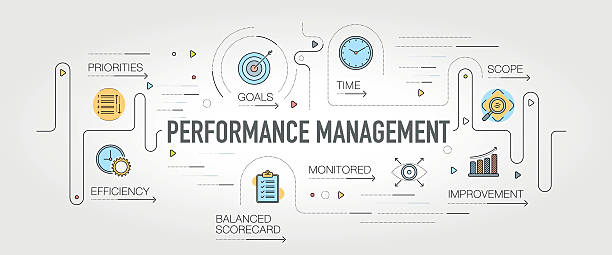Identifying and developing future leaders is crucial for any organization’s long-term success. Performance Management (PM) plays a pivotal role in this process by offering a structured approach to assess, nurture, and empower high-potential employees. Here’s how you can effectively use PM to spot emerging leaders and help them grow into their leadership roles.
Types of Leaders
Here are some common types of leaders:
Based on Leadership Style:
- Authoritarian Leaders: Make decisions independently and expect obedience.
- Democratic Leaders: Encourage participation and collaboration in decision-making.
- Laissez-Faire Leaders: Provide minimal guidance and allow group members to make their own decisions.
- Transactional Leaders: Focus on rewards and punishments to motivate followers.
- Transformational Leaders: Inspire and motivate followers to achieve extraordinary things.

Based on Leadership Roles:
- Executive Leaders: Set the overall direction and strategy for an organization.
- Operational Leaders: Focus on day-to-day operations and execution.
- Team Leaders: Lead and manage specific teams or projects.
- Mentors: Guide and support the development of others.

1. Understand the Characteristics of Future Leaders
Before you can identify future leaders, it’s essential to understand the traits that make someone a strong leader. These include:
- Strategic Thinking: The ability to see the big picture and plan for the future.
- Emotional Intelligence: High empathy and self-awareness in interpersonal interactions.
- Adaptability: Willingness to learn and thrive in dynamic environments.
- Decision-Making Skills: Confidence and sound judgment in making critical decisions.
- Strong Communication: Ability to articulate ideas clearly and motivate others.
By recognizing these qualities, you can create a framework for evaluating employees’ potential for leadership.
2. Set Clear Performance Expectations
A successful performance management process begins with setting clear expectations. Make sure employees know what is expected of them in terms of both individual performance and leadership potential.
- Define Leadership Competencies: Outline specific leadership skills that align with your organization’s goals.
- Align Goals: Ensure individual performance goals align with broader organizational objectives, emphasizing leadership-related outcomes.
- Continuous Feedback: Offer regular feedback on performance, highlighting leadership capabilities and growth areas.
Tip: Use frameworks like the 9-Box Grid to evaluate potential leaders across performance and leadership dimensions.
3. Use Regular Performance Reviews
Performance reviews are a vital tool in identifying leadership potential. During reviews, focus on both current achievements and future capabilities.
- Assess Leadership Traits: Evaluate employees on leadership qualities, such as decision-making, problem-solving, and collaboration.
- Monitor Long-Term Potential: Look beyond short-term success to gauge who consistently demonstrates high potential for growth.
- 360-Degree Feedback: Gather feedback from peers, subordinates, and supervisors to gain a comprehensive view of an employee’s leadership potential.
Example: A high-performing employee who regularly exceeds targets and shows initiative in team projects may be a good candidate for future leadership roles.
4. Provide Leadership Development Opportunities
Once you’ve identified high-potential employees, it’s crucial to offer leadership development opportunities. Performance management processes should include structured programs to nurture these future leaders.
- Training Programs: Provide formal leadership training on topics like conflict resolution, decision-making, and team management.
- Job Rotation: Allow employees to take on different roles or responsibilities across departments to broaden their experience.
- Mentorship: Pair emerging leaders with senior leaders who can guide them and share their leadership insights.
Case Study: A software company identified a promising employee and enrolled them in an executive leadership development program, which led to their promotion within a year.
5. Encourage a Culture of Continuous Learning
To develop future leaders, you must foster a learning culture that encourages employees to continually improve their skills and leadership capabilities.
- Offer Regular Training: Provide ongoing learning opportunities to build leadership skills and competencies.
- Encourage Self-Assessment: Prompt employees to assess their leadership strengths and areas for improvement.
- Promote Innovation: Create an environment where employees feel comfortable suggesting new ideas, driving creativity, and thinking strategically.
Tip: Utilize performance management software to track and encourage learning and development goals tied to leadership growth.
6. Align Leadership Goals with Organizational Strategy
Ensure that the leadership skills being developed align with your organization’s current and future needs.
- Strategic Alignment: Identify leadership competencies that will help the organization achieve its strategic objectives.
- Succession Planning: Develop succession plans to ensure that future leaders are ready to step into key roles as needed.
- Leadership Pipeline: Build a leadership pipeline by identifying candidates who are ready for the next step in their career.
Example: An organization with a global expansion strategy might prioritize cross-cultural communication and international market knowledge in its leadership development efforts.
7. Track and Measure Progress
Monitoring the progress of emerging leaders is crucial to ensure they are on the right path. Use performance management tools to track their development.
- Set Milestones: Break down leadership development into clear, measurable milestones.
- Regular Check-Ins: Hold regular meetings with emerging leaders to assess progress and adjust development plans as needed.
- Feedback and Adjustments: Offer constructive feedback and make adjustments to development plans based on performance and evolving organizational needs.
Example: Regular check-ins may reveal that a potential leader needs more experience in team management, prompting the company to provide additional opportunities in this area.
8. Create Opportunities for Leadership in Day-to-Day Work
Emerging leaders should be given opportunities to demonstrate leadership in their current roles.
- Project Ownership: Assign employees to lead projects or initiatives that align with their skills and interests.
- Leadership in Teams: Offer team leadership roles, even if temporary, to give employees a chance to showcase their leadership abilities.
- Cross-Functional Collaboration: Encourage employees to work across departments, helping them develop a broader understanding of the business and hone their leadership skills.
Pro Tip: Create a framework for employees to take on leadership tasks progressively, allowing them to grow into their roles without feeling overwhelmed.
Conclusion
Identifying and developing future leaders is an ongoing process that requires commitment from both the organization and its employees. By using performance management processes to assess leadership potential, provide targeted development opportunities, and track progress, organizations can build a strong leadership pipeline. With the right approach, emerging leaders will be equipped to take on senior roles and drive long-term success.

